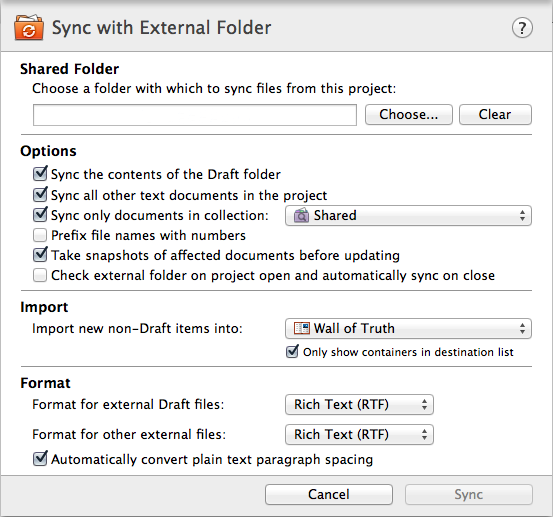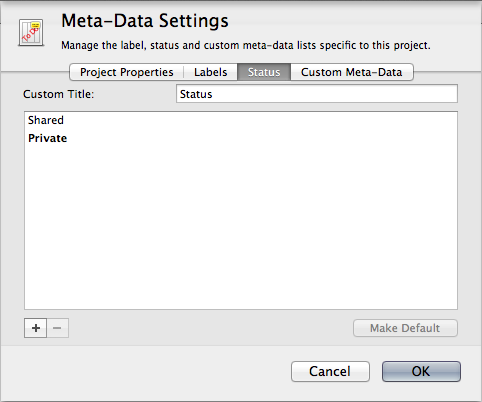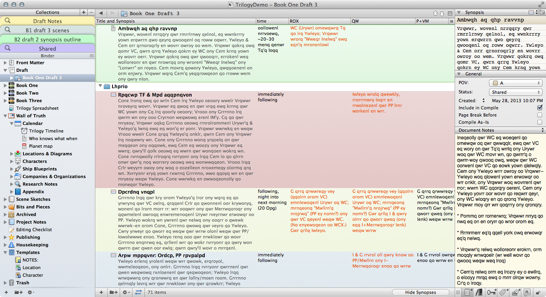We've just entered autumn here in the northern hemisphere. To celebrate the changing seasons, the fiery landscape, the woodsmoke scenting the crisp air, I thought I would make this month's post a simple (yet subtly complex and insightful) haiku.
Then I remembered I can't write poetry worth fairy gold. Also, my autumn kicked off with unceasing rain, fog, and general unpoetical greyness. So instead I will regale you with the mostly-true tale of another autumnal event: writing a novel in a month!
My three best NaNoWriMo novels have three things in common: They were all meticulously outlined, collaborative, and written in Scrivener. Coincidence?
Yeah, possibly, but I'm going to blog about it anyway.
Although NaNoWriMo officially frowns on collaboration, NaNo Rebels have a special home in the forums, and I have no shame. My partner in crime and I churned out over 50K words apiece all three Novembers, and if alone we each only had half a book--well, 50K is only half a book anyway. Together, we had a complete beginning-to-end novel that included a middle thick with subplots. I won't say the writing or plotting was staggering genius (I try to be humble) but it made a beautiful first draft ready to be ripped to pieces and redone. A definite NaNo win.
To make it work, we needed to be able to write at any time. We both had crammed schedules, and as we all know you can't turn on creativity like a faucet. Sharing a single Scrivener project thus wasn't a viable option, since we'd be too likely to run into conflicts. We also needed to have the novel planned enough that we could write without waiting on the other person's instalment. But though we didn't want to wait for each other's scenes, we did want to see them. Purely from a desire to encourage, inspire, and applaud, you understand. Neither of us harbours a competitive bone in our body.
Not having had the foresight to write our collaborative NaNos while still housemates, my partner in crime and I turned to good old-fashioned email and instant messaging to plot the novel. The plan was to break down the novel scene by scene and split the total between us. We'd been tossing ideas around for a while, so we had a pretty good idea of the general shape of the story. Building it into a concrete, coherent outline was something else altogether, but November's loom lightened the process. It's difficult to be too perfectionist about a novel you're going to bang out in a month.
Our handful of point-of-view characters divided the scenes among themselves without much bickering. We each took a few characters, and the count came out surprisingly even. I won't speak to how well-balanced the scenes were, but it hardly mattered for NaNo. I can stretch the word count of anything, and my partner in crime writes fast. In the event, I foisted three scenes off on her and we ended happy.
Because I'd been the one insisting we use Scrivener (I wasn't working for L&L at the time, so I was allowed to badger people like that), I took charge of creating the project. Into this went our research, emails, notes, and painstakingly crafted MorphThing character mugshots. (Procrastination: Never start NaNo without it!) Our outline became synopses of 781 Draft documents, labelled by point of view and assigned "author" custom meta-data.
I used the author data to build a collection of all my scenes and another of all my co-author's. Once we forked the project so we could each work in our own copy, we set our collection as the compile group. That let us track our month's word count independently in Project Targets and compile for the validation servers without cheating.
We shared our work during the month using Scrivener for Mac's "Sync with External Folder" feature.2





0 Comments
Please sign in or register to comment on this post.
Register
Sign in
Forgotten password